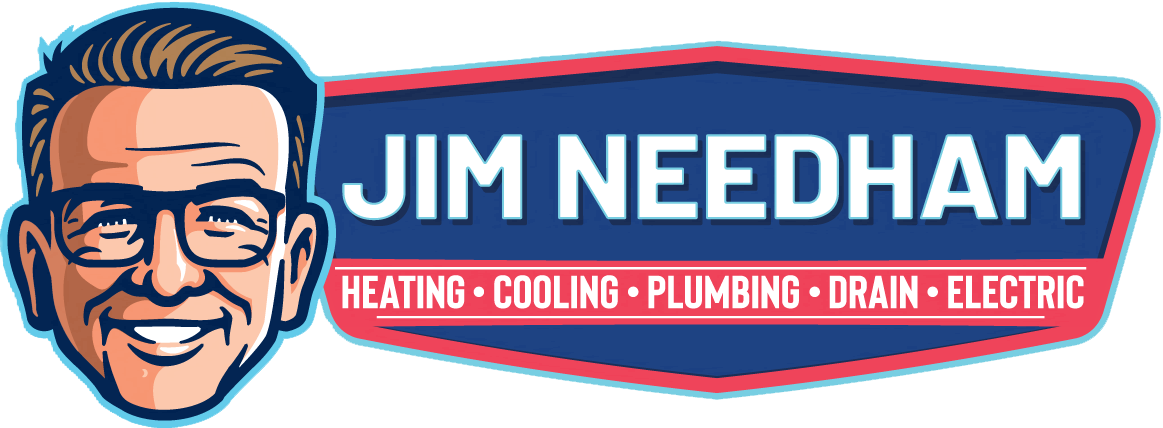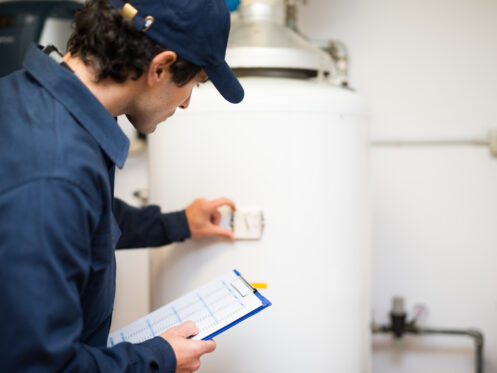Hot water is a critical component of your Thornton home, making your water heater an essential fixture. Investing in a quality unit is necessary, as they work hard daily to provide hot water for showers and baths, laundry, dishwashing and more. As with other systems in your home, water heaters have a limited life, meaning you will eventually have to replace yours.
Tankless water heaters have become increasingly popular since they came about. If you’re faced with a failing water heater, you’re probably wondering which type to buy and install. When deciding whether to install a traditional or tankless water heater, you should consider the cost, efficiency and longevity of potential units. Each type has pros and cons, so assessing your personal situation also comes into play.
What Is a Traditional Water Heater?
Approximately 90% of American homes have traditional water heaters. These consist of large, cylindrical tanks that typically hold 40 to 120 gallons of water, taking up a significant portion of floor space in your home or basement. The heater warms up the water in the tank using natural gas or electricity and keeps it at the temperature set on the unit. A pipe leads from the top of the heater to your home’s plumbing system. When you turn on your faucets, your plumbing routes hot water from the tank to wherever you need it. Traditional tank heaters have insulation to keep water warm until you need it.
What Is a Tankless Water Heater?
Tankless water heaters are small units that heat water only when needed, so they are frequently called “on-demand” heaters. They can deliver a consistent flow of hot water in most situations. Similar to traditional tank heaters, tankless units use either gas or electricity as fuel.
Comparing Tank vs. Tankless Hot Water Heaters
When comparing tank versus tankless water heaters for your home, you’ll find no right or wrong option. Jim Needham Heating Cooling Plumbing and Drain has a wide range of options for you to consider. However, it can become challenging to determine the right choice for your needs. Each has its own set of benefits and drawbacks, and understanding them can help you make an informed decision.
Traditional Water Heater Pros and Cons
If you need an upfront economical solution, a traditional tank heater may be for you. They cost significantly less to install because installation is more straightforward and requires fewer parts. These units do not require complicated connections, so qualified plumbers can install them without much effort. Although many homeowners seek advanced technological features for new installations, the fact that many traditional tank heaters don’t have complicated wiring is an advantage. Simplicity makes them more reliable, giving them a smaller chance of suddenly shutting down due to a minor problem. Larger units have the capacity to heat and hold a significant amount of water.
In addition to taking up a lot of space, traditional tank units have several disadvantages. With a traditional tank heater, you’ll likely see relatively higher utility bills because the heater must always have a ready hot water supply. The lifespan of these appliances is usually shorter, too, generally at 10 to 15 years. If you have a smaller unit, you run the risk of hot water running out if you run the dishwasher and washing machine while several people are showering.
Traditional heaters require more maintenance, with periodic draining to remove sediment buildup. Without proper maintenance, the heater may become less efficient and can even leak water from its tank. Due to the high volume of water traditional units store, this can result in major water damage if something goes wrong.
Tankless Water Heater Pros and Cons
Tankless heaters give a household a constant hot water supply. They are much more energy efficient, heating water only when you need it, resulting in significant utility savings over time. These units last longer, too. With proper preventive maintenance, many keep running for 20 years or more. Their small size allows for installation almost anywhere, including under sinks and other tight places, giving you room for other essentials. Because they do not have a large tank, these units do not need flushing or cleaning and are less prone to leaks.
Higher upfront costs mark the most significant drawback of tankless water heaters. Initial equipment costs and parts average between $1,000 and $3,000 for installation, nearly double that of a traditional unit. They are also more complex to install, requiring a master plumber. Because of the more complicated installation, maintenance can be more expensive if something goes wrong with the unit. Though you won’t run out of water and have to wait for it to heat back up the way you would with a traditional tank water heater, tankless units can still struggle to keep up. If you have a large family or need to use hot water in multiple places at once, you may need to get a tankless heater with a larger capacity or invest in multiple units to place throughout your home.
Evaluating Your Household Needs to Select a Water Heater
When you think about a new water heater, you need to do more than look at the pros and cons of each unit type. First, evaluate your current plumbing system. Its configuration, plus the size and shape of the pipes, may be more conducive to one type of system over another.
Your household size and water usage habits are also critical factors. Tank heaters come in various sizes to accommodate your household’s patterns. If you use hot water constantly throughout the day, a traditional unit may be the better choice. Tankless heaters are often better options for smaller households with less usage.
Another factor to weigh is initial cost versus energy efficiency. If you can afford a tankless heater and retrofit your home, tankless heaters are a better long-term option. Electric tankless heaters are less expensive than gas models, but they often have slower heating times and are more costly to run than gas-powered ones. Operational costs vary according to the size of your home and hot water usage. Tankless water heaters pay for themselves within the first few years of usage due to decreased energy bills.
Even after evaluating these considerations, you still may wonder what the best choice is. In these situations, getting a professional opinion from plumbers like Jim Needham Heating Cooling Plumbing and Drain is invaluable. Our expert staff will evaluate your space and plumbing. Using this information, we can help you navigate your options. Such advice can be invaluable when faced with the particulars of each unit, including maximum gallons per minute (GPM), heating capacity (BTUs) and ENERGY STAR certification and ratings.
Contact Jim Needham Heating Cooling Plumbing and Drain for a Variety of Home Comfort Needs
Jim Needham Heating Cooling Plumbing and Drain provides a wide selection of mechanical services for your home in Thornton, CO, and the surrounding communities. We also provide plumbing services, including repairs, drain cleaning, leak detection, repiping, water and sewer lines, camera inspection, and more. You can also count on our experienced HVAC technicians for heating and air conditioning repair, maintenance, and installation, along with indoor air quality solutions.
If you would like to schedule an appointment with Jim Needham Heating Cooling Plumbing and Drain, please call us or fill out our convenient online form.


